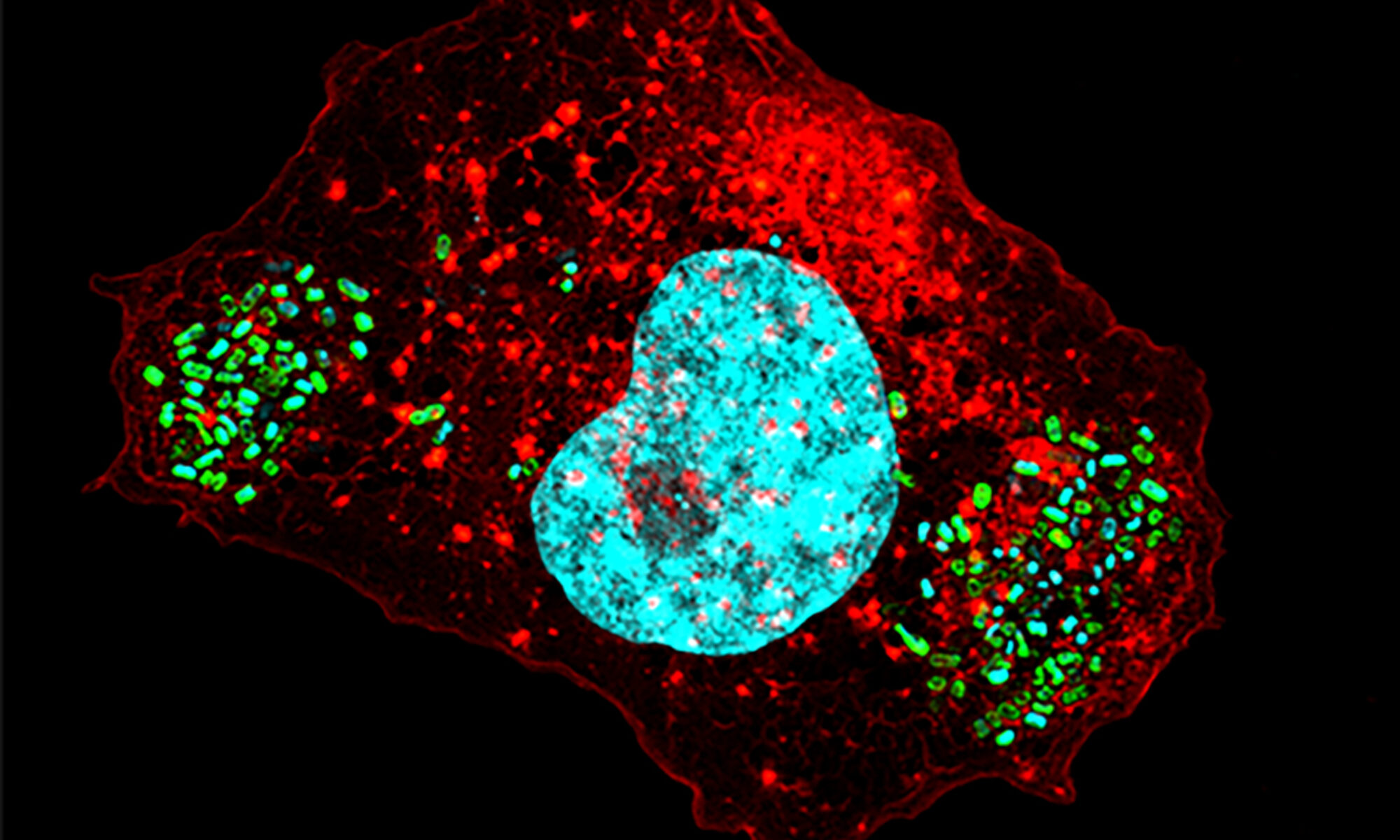Macrophages are highly diverse and plastic immune cells that can polarise in response to cues of the environment into many different phenotypes. Moreover, there is a huge diversity of tissue-resident macrophages with important and diverse functions in virtually every human organ, for example microglia in the brain, Kupffer cells in the liver and the three different subsets of macrophages in the lymph node. Because of their importance and this diversity, it is not surprising that uncontrolled macrophage polarisation is frequently associated with disease

Macrophages are important phagocytes that clear apoptotic cells and cellular debris during development and tissue homeostasis as well as pathogenic microbes during infection. Phagocytosis can be defined as the uptake of large particles (~0.5-10 μm) by cells. It is an important cellular mechanism for all eukaryotes and highly conserved in evolution: while lower eukaryotes phagocytose for food, multicellular organisms have developed specialized phagocytic cells such as macrophages as a key part of the innate immune response. Phagocytosis is induced through binding of particles as diverse as inert beads, microbes or apoptotic cells to cell surface receptors of which a variety has been identified. After internalization, newly formed phagosomes engage in a maturation process that involves fusion with endosomal populations and ultimately with lysosomes, leading to the formation of phagolysosomes where the foreign matter within is degraded. Microbe degradation in the phagosome produces antigens, which are presented at the cell surface to activate specific lymphocytes and elicit appropriate immune responses, linking innate to adaptive immunity. Phagosomes are highly complex organelles that are in constant change due to fission and fusion with other organelles. The highly dynamic nature of phagosomes emphasises the importance of identifying phagosome-associated proteins. Wetzel and Korn had firstly introduced the isolation of phagosomes enclosing latex beads by flotation in a sucrose gradient in 1969. This method was further developed by Desjardins et al. to enable isolated phagosomes of very high degrees of purity. Because of the low density of the beads, latex bead phagosomes (LBPs) can be isolated in one-step on a sucrose gradient, leading the way for phagosome proteomics.
Our understanding of phagosome biology is of great importance as several pathogens including Leishmania, Brucella or Legionella species, and most prominently Mycobacterium tuberculosis are able to inhibit phagosome maturation. Particularly tuberculosis was identified as a major global health threat by the World Health Organisation (WHO) with 9.4 million incident cases, 14 million prevalent cases and 1.68 million deaths in 2009 alone, highlighting the importance of our understanding of phagosome function during infection. Moreover, phagosomal, endosomal and autophagosomal delivery to the lysosome is controlled by the same vesicular trafficking complexes. But while phagosomes can be isolated to a high purity, endosomes and autophagosomes cannot. This offers a unique chance to characterise conserved principles in these pathways employing proteomics, cell biological and biochemical tools. It will give insights into broader biological contexts such as many neurodegenerative diseases that are caused by mutations in proteins important for lysosomal delivery.
In recent years, we published a number of papers on phagosomes, including the effect of IFN-γ activation (Trost et al, Immunity, 2009), the role of the ER on the phagosome (Valois-Campbell & Trost et al, Mol Cell Proteomics, 2012), the role of receptor signalling on the phagosome (Dill et al, Mol Cell Proteomics, 2015), the differences of monocyte/macrophage cell lines to bone-marrow derived macrophages (Guo et al, Proteomics, 2015), the Legionella vacuole proteome (Naujoks et al, PLOS Pathogens, 2016), novel methods for the analysis of phagosomes (Peltier et al; Härtlova et al, Methods in Molecular Biology, 2017), showed that the Parkinson’s kinase LRRK2 regulates phagosome maturation (Hartlova et al, EMBO J, 2018) and identified that MSR1 is signalling receptor from phagosomes in alternatively-activated macrophages (Guo et al, EMBO J, 2019).
We are currently focussing on understanding the role of ubiquitylation on the phagosome. We have been awarded a Wellcome Trust Investigator Award in order to understand how ubiquitylation regulates innate immune signalling and vesicle trafficking in macrophages. Recent papers include the characterisation of ubiquitylation on the phagosome and the role of RNF115 (Bilkei-Gorzo et al, EMBO J 2022).
Members:
Jack Gudgeon 🇬🇧
Meihan Meng 🇨🇳

